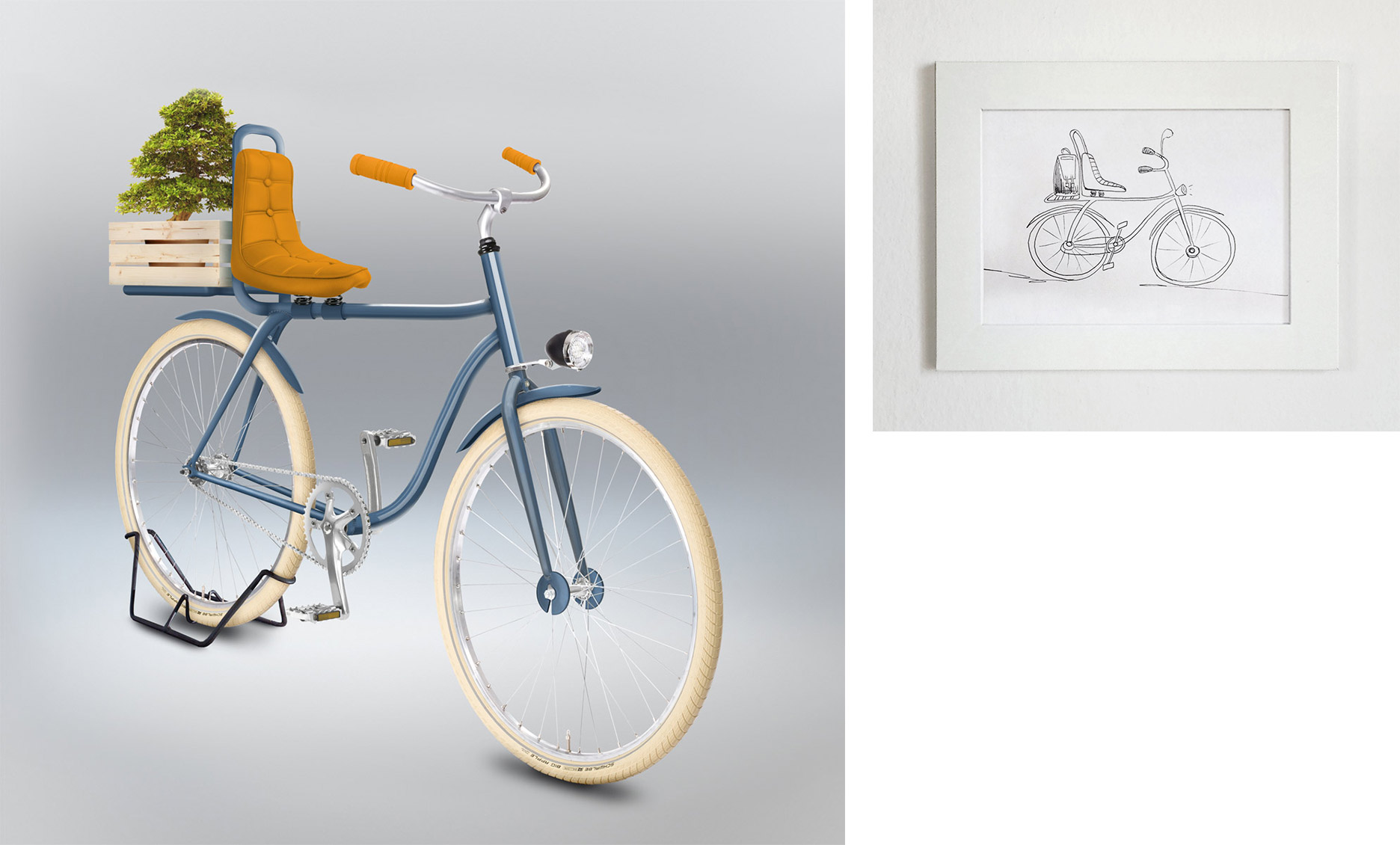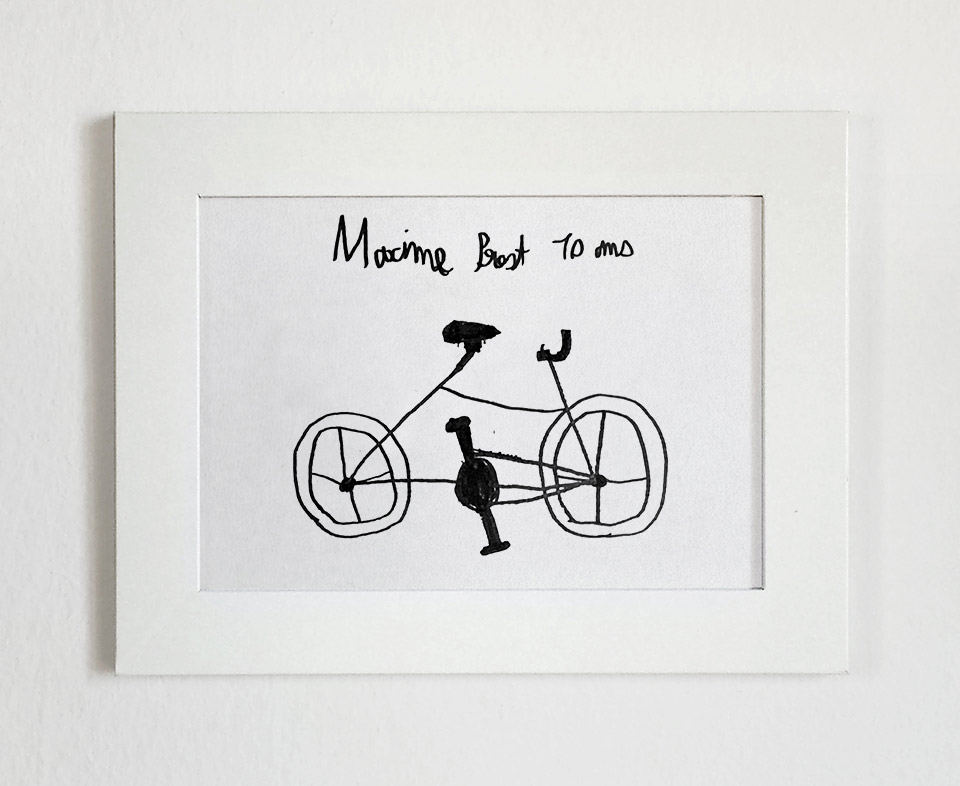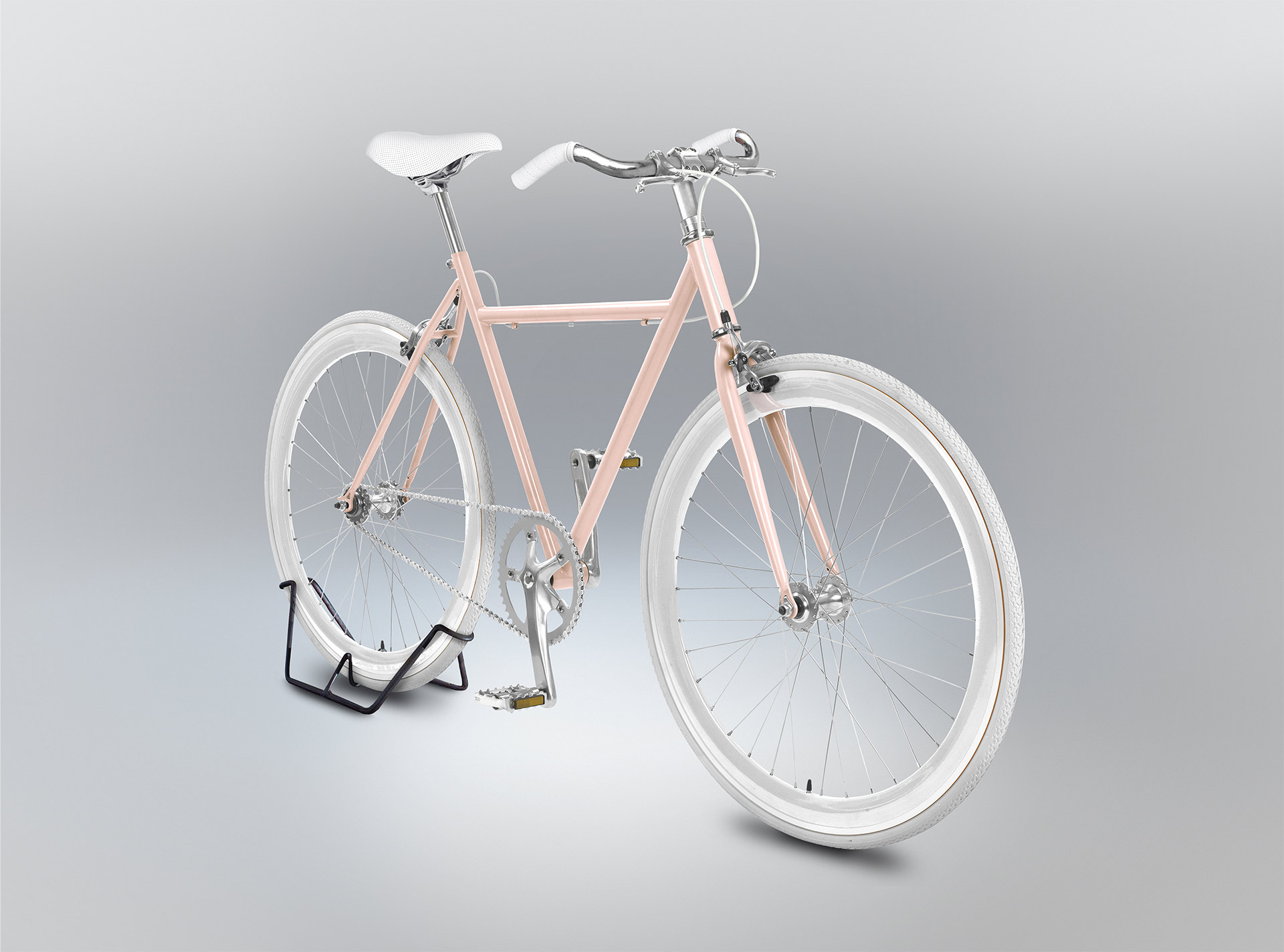
This bicycle is missing the chainstay, a very important part of its frame, and it would immediately break if someone tried to ride it. But luckily this bike doesn’t exist. Let me explain everything from the beginning:
A small selection of the sketches that were collected between 2009 and 2016





In early 2016 I eventually decided it was my turn to take part in this project.
I decided my job was going to be presenting the potential and the beauty inside these sketches. I selected those that I found most interesting and genuine and diverse, then rendered them as if they were real. I became the executor of these two minute projects by people who were mainly non-designers and confirmed my suspicion: everyone, regardless his age and job, can come up with extraordinary, wild, new and at times brilliant inventions.





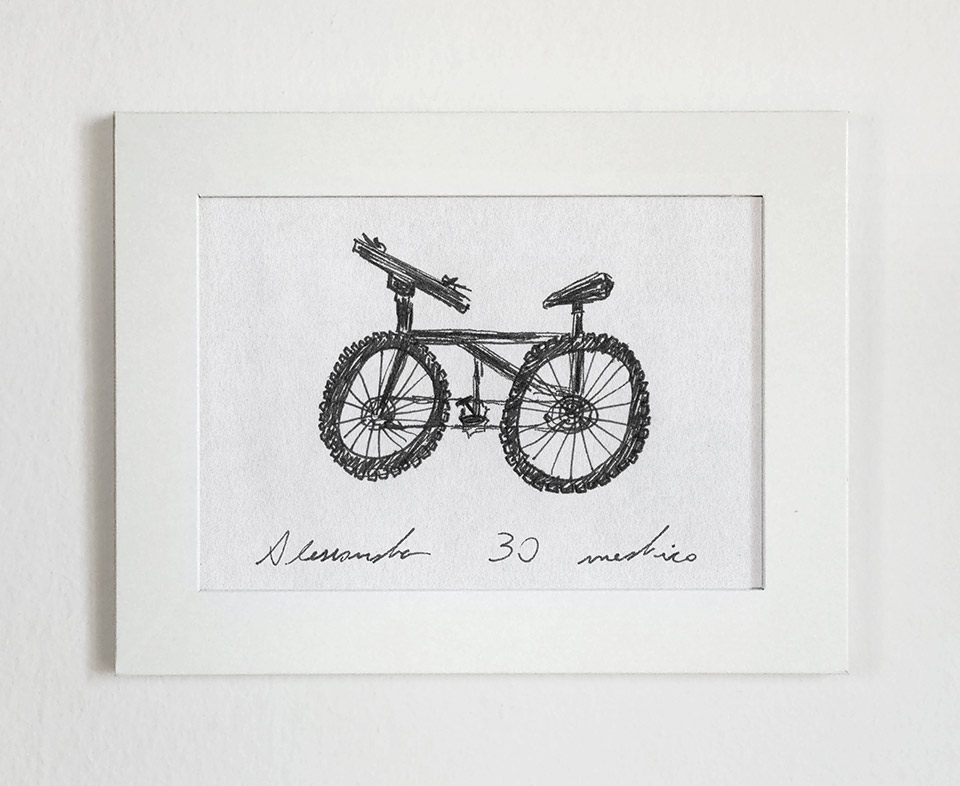






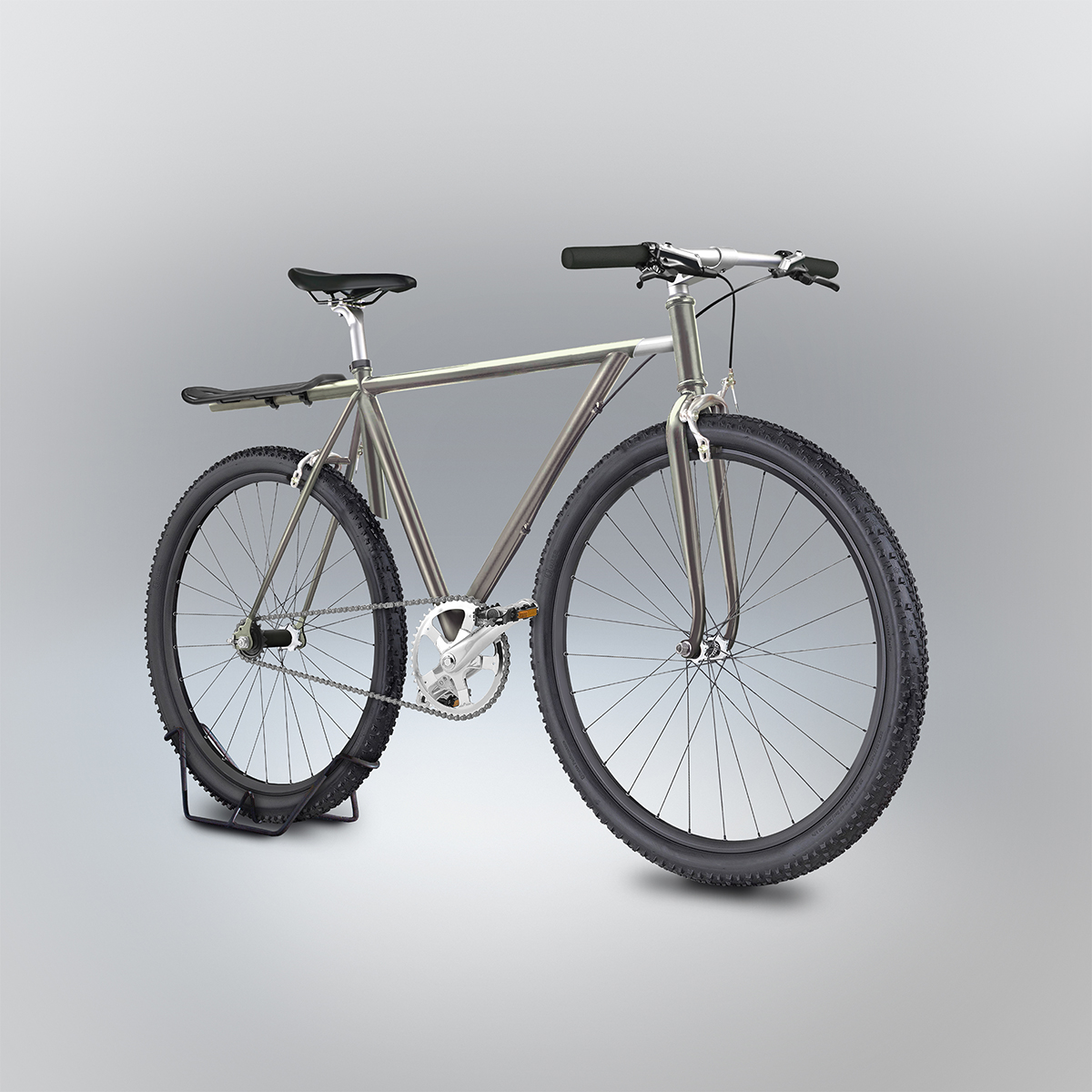
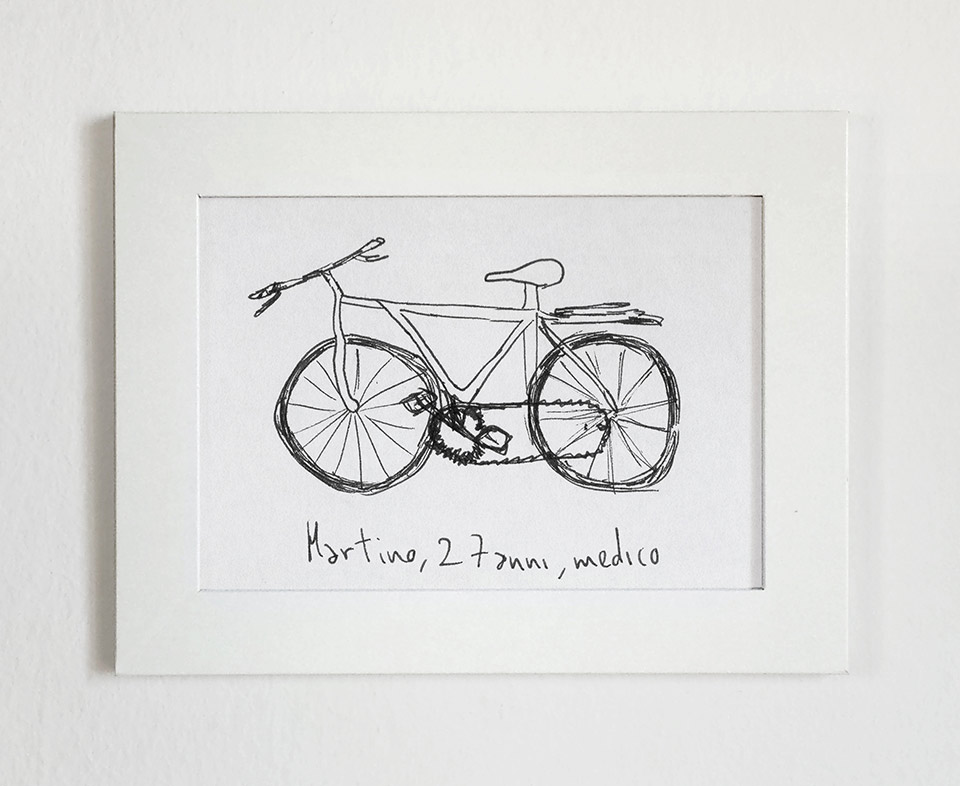







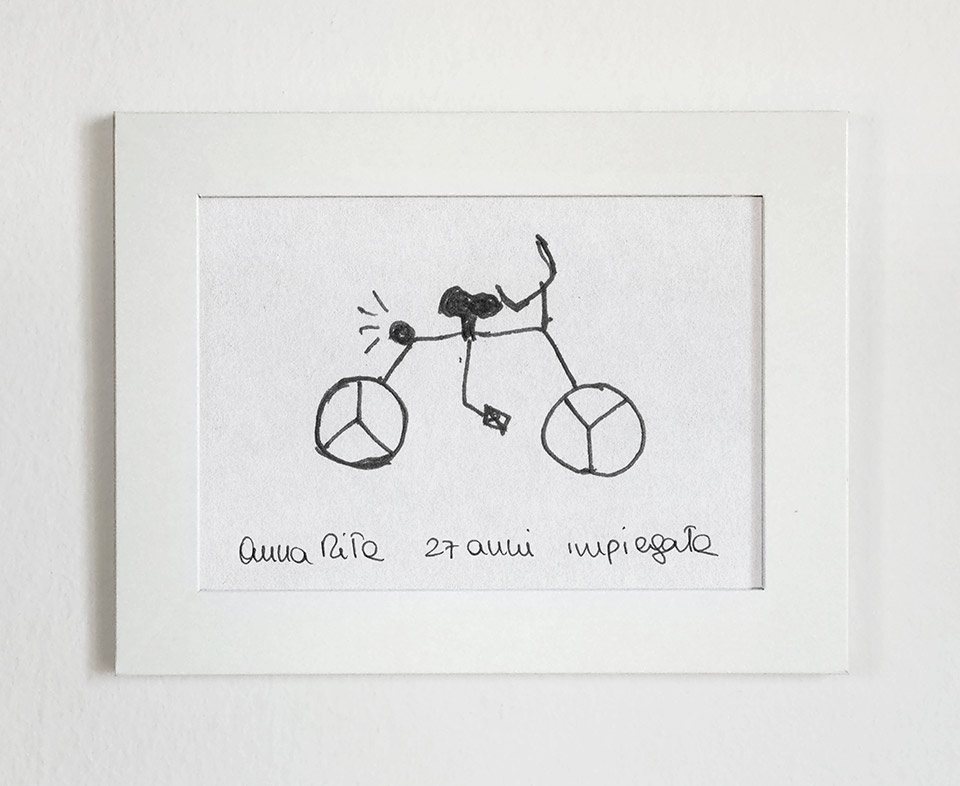


Some stats:
total number of collected bicycles: 376
youngest participant: 3 y.o.
oldest participant: 88 y.o.
different nationalities of participants: 7
bicycles facing left: 75 %
bicycles facing right: 25 %
Fun facts:
Some diversities in sketching appear to be correlated to gender. Nearly 90% of drawings in which the chain is attached to the front wheel (or both to the front and the rear) were made by females. On the other hand, while men generally tend to place the chain correctly, they are more keen to over-complicate the frame when they realize they are not drawing it correctly.
One of the most frequent issues for participants was not knowing exactly how to describe their job in short.
The most unintelligible drawing has also the most unintelligible handwriting. It was made by a doctor.
Details






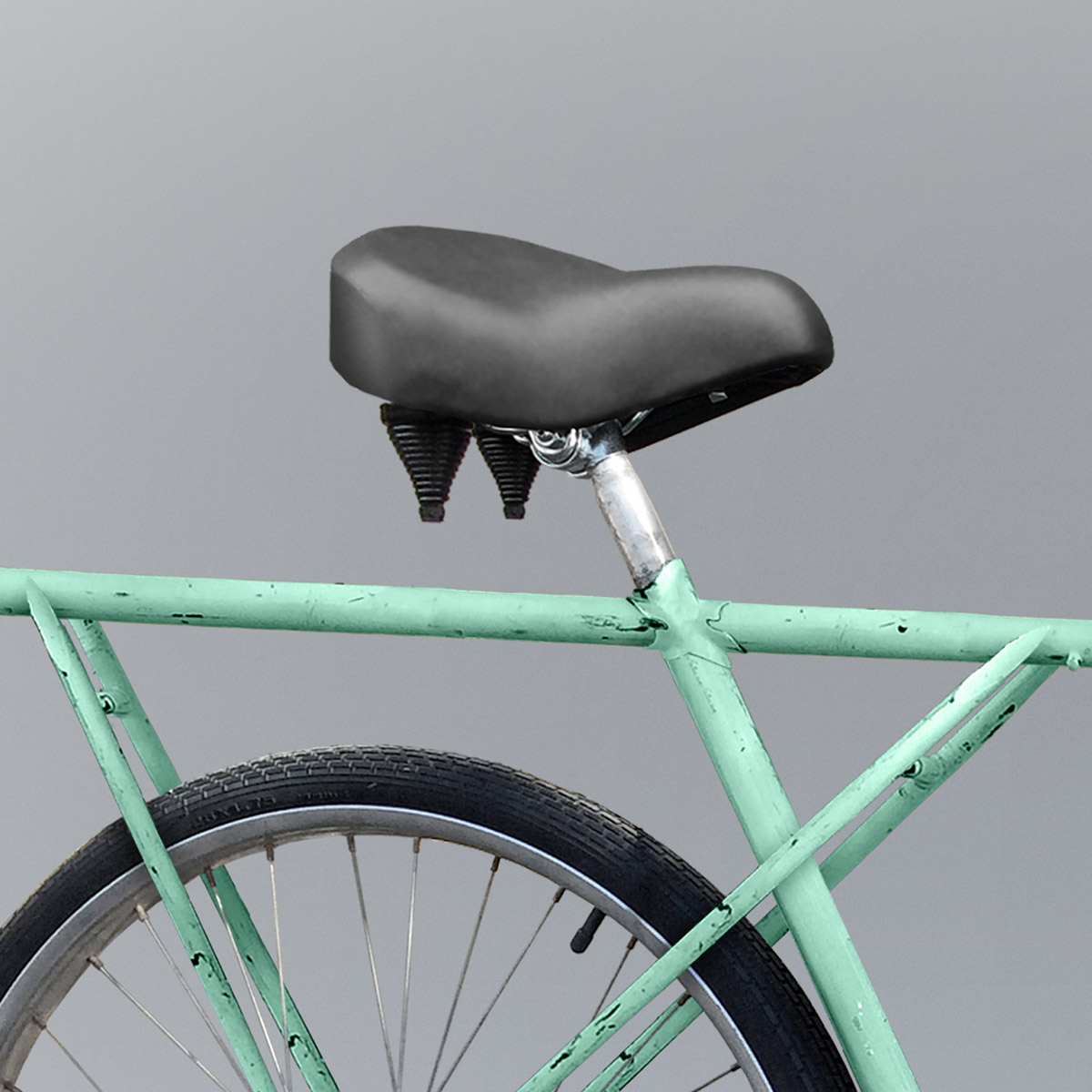

Bonus designs and Making Process
Velocipedia has been a very appreciated project. It is still being requested for exhibits all around the world and is by far my most known work.
Velocipedia has already been on show in Athens, Berlin, Budapest, Berriedale (Tasmania), Grisolles, Jerusalem, Madrid, Mannheim, Monaco, Paris, Winterthur and a few other places. It is also featured in a document by Frauke Schlieckau for Arte.tv called Biking Boom.
Some of these shows were linked to contests in which participants were asked to draw a bike by memory. A jury would then select a winner and their prize would be a rendering made by me according to the sketch. Another rendering along the principles of Velocipedia was made for an italian TV show called Easy Rider. It was based on the recollection of a bicycle as drawn by the host Marta Saviane.
